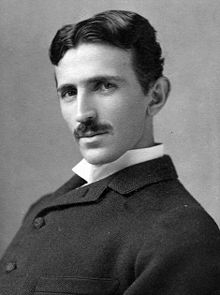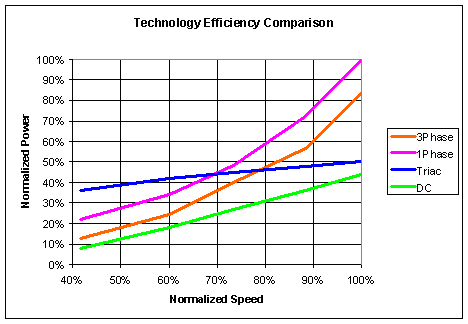What is the difference between DC vs AC ceiling fans?
DC means direct current, AC means alternating current. AC changes direction 50 times a second whereas DC doesn’t change at all. Both have been around for a long time and DC was used in not only batteries but for transmission too in the late 19th century being pushed by Edison. However, DC experiences a large drop in power as you got further up the wire away from the source which is a serious practical limitation. Then along came the famous Serbian inventor Nikola Tesla who developed the first AC motor and transformer which he licensed to Westinghouse and eventually AC won the day in the “current wars” that took place between the three large US electric companies.
With AC at any voltage, it can be transformed through use of the highly efficient transformer to any other voltage. Stepping up the voltage has the effect of stepping down the current for the same power transfer. The AC electric generator determines the frequency of the power. What is unique and so important about AC is that the voltage can be easily changed making it more suitable for long-distance transmission than DC electricity. The power lost in transmission is proportional to the current. So by making the current smaller the power lost is smaller. At the same time as the current is stepped down by a transformer the voltage is stepped up which is why long distance power lines are at very high voltages. The other major benefit of AC is that it can be used with capacitors and inductors in electronic circuitry to enable the tuning of circuits to take place. This has meant that a wide range of applications to be created which is why it has been commonly used in domestic appliances and still dominates them today.
Ceiling fans have been primarily driven by AC current using capacitors to start the motor and control the typical 3-speeds. In the early 2010’s a new form of more efficient ceiling fan control emerged whereby the AC current was converted into DC which meant far more precise control of the voltage waveform enabling typically 6-speed control. The DC current is converted back into AC before being fed to the motor itself, the whole thing being termed a motor-driver.
Common Misconception – DC Fans Don’t Need a DC Power Supply
When most people first look at DC ceiling fans they assume wrongly that they require a DC power supply. This is not the case as the motors use a driver that sits on top of the motor to convert the mains AC into DC and then back to AC again to feed the motor itself, which is in fact AC!
Recent Developments in DC Ceiling Fan Technology
In recent years however, DC technology has become more sophisticated to the extent that it can be applied to both residential and industrial ceiling fans. DC motors use permanent built-in magnets to attract and repel a rotor around an axis coupled with inverters. DC ceiling fans also use a newer type of “brushless” DC motor that use electrically commuted motors (ECM) that is even more efficient and also very quiet thus making ceiling fans great for bedrooms. They do however require more advanced electronics to control the speed. The speed is more linear with airflow and so by simply reducing the voltage the speed of the fan can be slowed. They draw less power whereas in an AC motor the power has to be reduced by clever electronic controllers which reduce it by voltage (TRIAC control) , frequency (Variable Frequency
Drive) of phase control. These often end up absorbing a lot of power and turning it into wasted heat. Nothing beats a DC control for energy savings, cost, size, safety or controllability but they are more expensive. The more sophisticated and expensive ECM AC motor controllers now actually switch the AC into DC current. The efficiency savings are substantial with up to 70% less energy consumed for the same air output. Typical values range from 600 m3/h/w (350 cfm/w) to 1100 m3/h/w (650 cfm/w) at low speeds. This means that a 25 w DC driven fan uses the same power as a 100 w AC driven fan. Now add in the use of a low energy light bulb which will use 1/5 of the power for the same light output and the total savings are immense. What this means in practice is that you can keep your fans running around the clock in places like shops and restaurants where there is plenty of heat generated by the lighting.
Peak Starting Current
The peak in rush/peak starting current of a brushless DC fan typically will be a function of circuit resistance and power resource. A lot of brushless DC fans incorporate additional filter capacitance for electromagnetic interference (EMI) suppression which can be seen in the form of a carbon choke. Depending on the circuit location, the capacitance may represent a very high instantaneous in-rush current spike. The ratio of peak starting current to running current can be quite large, eg., 4:1 or 5:1. To overcome the stress that would be placed on the power supply they use a form of current limiter so that the peak current draw typically will be limited to values of 2.5 to 1 or less. This limiting of current also limits the starting torque of the motor, which will extend the time needed for the fan to reach full speed. Manufacturers of DC ceiling fans compensate for this by using a higher voltage (which is easy to do) which means that their fans have much higher starting torque that their AC counterparts with the resulting time to reach full speed being less than equivalent AC models.
Beware Very Cheap Copy DC Ceiling Fans
In the past year or so there are some very cheap Chinese copy ceiling fans enter the market mainly from Spain, and backed with plenty of fake reviews. We have purchased a few to test and whilst they appear and look to be the same as the premium brands that we sell they are of extremely poor quality. The metal casing for the fan is very thin having little strength denting and bending easily. The wooden blades are of low grade cheap unseasoned wood that will easily warp in time leading to wobbles. The motors are noisy, are not brushless and not smooth with the speed control changes are virtually unnoticeable. They have a one year warranty as required by law but I doubt if they will even make that before more serious buzzes, hums or outright motor and controller failure occurs. They have no proper power surge or RF interference protection and so will easily blow when encountering one of the regular power spikes that occur from the mains.
Summary of differences between AC and DC fans
A DC ceiling fan uses typically 70% less energy for the same airflow as a conventional AC ceiling fan. They have better controls of different speeds (more speed settings typically 6) and are a smaller size for a given output of air movement. Being “brushless” the motors should also be quieter and less prone to the buzzes that can appear on cheaper AC ceiling fans and are also quicker starting. Due to the more complex electronics they are more expensive than an AC design and less reliable being more sensitive to voltage spikes although this has been addressed in the new models. Check out our great choice of both AC and DC ceiling fans that deliver all of the benefits discussed here.



